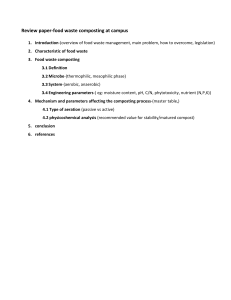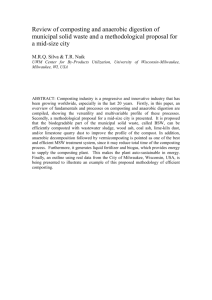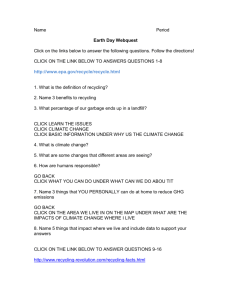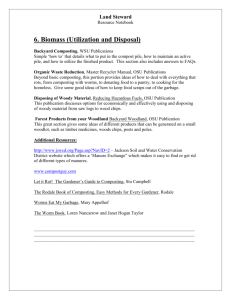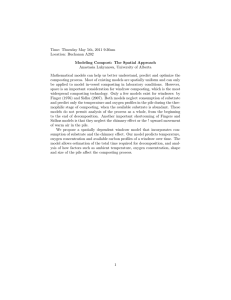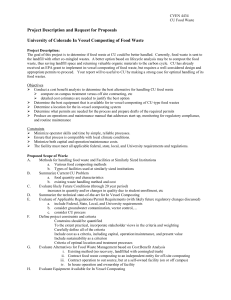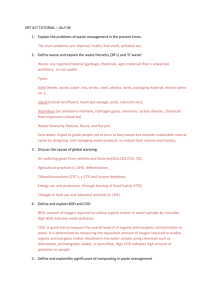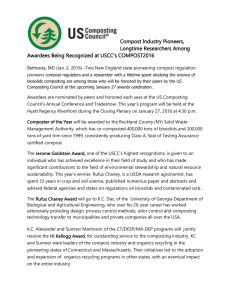File
advertisement
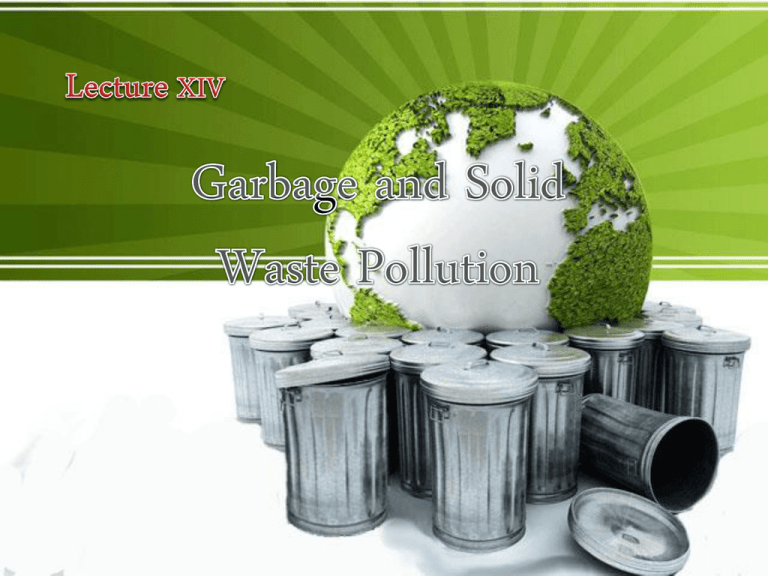
Can be easily touched, seen and smell. Growing accumulation depresses land values, increases traffic, and ruins health, aesthetics and the necessities of life. 432, 000 tons from people of limited state per day “NIMBY” mindset Four categories Biodegradables/non-biodegradables Combustibles/non-combustibles Recyclables/non-recyclables Hazardous waste Effects of “throw-away and disposable society”. Overpopulation of people on Earth. Overproduction of packaging materials, bottles, diapers and other non-degradable materials. Overproduction of newspaper, plastic bags and containers. Land clipping Medical waste or infectious waste (“red bag”) Burning tires Household wastes A torrent of garbage thrown away every year Accumulated garbage pile Some decomposing waste produces methane No available dumpsites The use of incinerator may produce more pollution. Recycling technology Three different types of solid waste Municipal waste Industrial waste Toxic and hazardous waste Zero Waste Management – Reduce, Reuse and Recycle (3R) Composting Sanitary Landfill Incinerators Ocean Dumping Open Dumpsite Garbology 1. What is R.A. No. 9003? 2. What are the salient features of R.A. No. 9003? a. Creation of the NSWMC, NEC and the Solid Waste Management Board b. Formulation of the National Solid Waste Management Framework c. Mandatory segregation of Solid Waste d. Setting of minimum requirements e. Establishment of reclamation programs and buy-back centers f. Promotion of eco-labeling g. Prohibition on non-environmentally acceptable products and packaging h. Establishment of Materials Recovery Facility i. Prohibition against the use of open dumps j. Setting of guidelines/criteria k. Provision of rewards l. Promotion of research and environmental education Accelerated Composting Technology (Bioreactor) Anaerobic Composting (Biogas Reactor) Vermicomposting Reported by: Perez, May Ann T. Macapagal, Aprilyn M.
